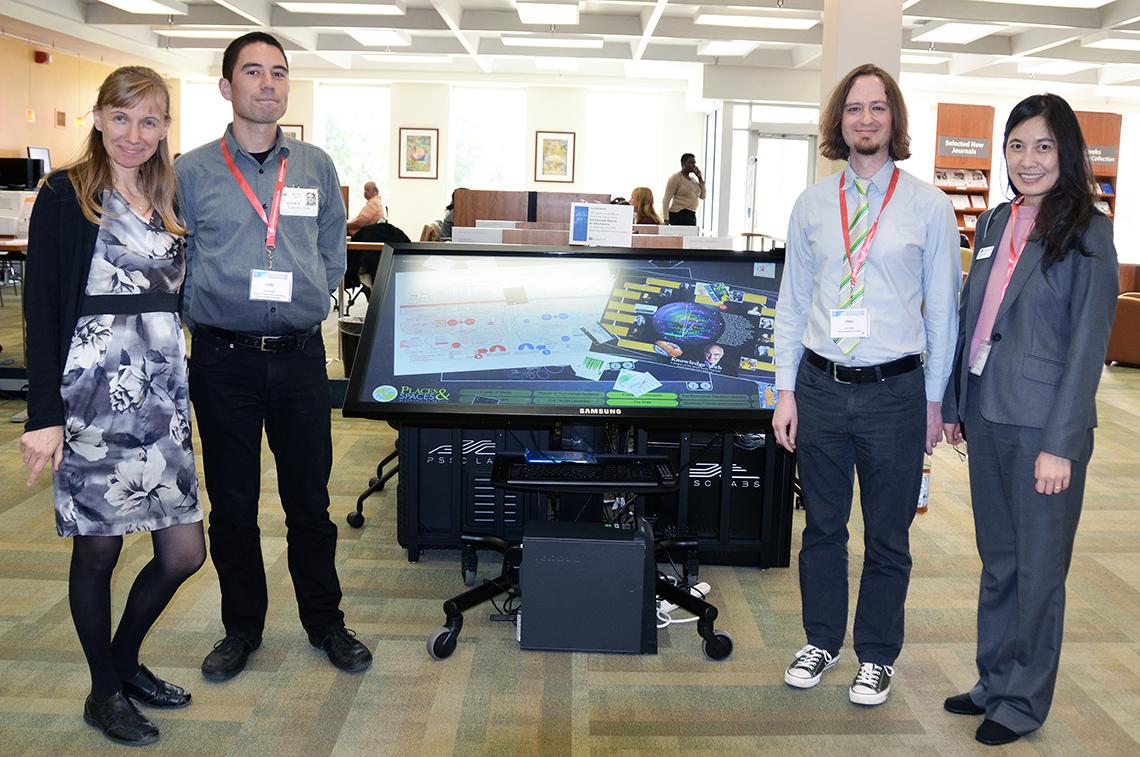NIH Library Hosts Bibliometrics Symposium

Photo: Kathleen McGlaughlin
One of the largest bibliometrics conferences in the U.S. was held Oct. 31 and Nov. 1 at NIH. Nearly 200 people from libraries and organizations across the U.S. and around the world attended the Bibliometrics and Research Assessment Symposium, co-organized by the NIH Library and the Maryland chapter of the Special Libraries Association.
Bibliometrics, the quantitative analysis of published research, is increasingly being used at NIH and in global organizations to explore and evaluate scientific research using publications as a proxy for research.
Keynote speakers Dr. Ludo Waltman, researcher with the Centre for Science and Technology Studies, Leiden University, The Netherlands, and Dr. Katy Börner, professor of information science at Indiana University, presented their talks in the Clinical Center’s Lipsett Amphitheater. They discussed current trends in the fields of bibliometrics and research assessment on the first day of the symposium. The remainder of the day included a poster session on the FAES Terrace and a lively group discussion. The second day was devoted to a hands-on workshop on bibliometric tools and techniques.
In his talk, Waltman articulated the differences between citizen and professional bibliometrics. After presenting a simplistic model of what citations measure, he delved into citation analysis challenges and proposed solutions. Issues that were covered—details of which can be reviewed in the archived videocast—included skewness of impact factors, inconsistencies surrounding indicators such as the h index and scientific field normalization when conducting analyses.
Börner introduced the audience to data visualization literacy. Through the display of several intriguing data maps, she discussed how data can be visualized relevant to information needs as well as tools to use for specific types of analysis. Also discussed were graphic variable types versus graphic symbol types and descriptive models. Among the slides shown were visual depictions of Börner and her co-researchers’ findings on the win-win of long-distance interdisciplinary collaboration for citation impact.
The NIH Library, located in Bldg. 10, provides innovative information services that help advance NIH’s mission. The library’s Bibliometrics Services Program provides both a standard suite of services to all of NIH and custom services to individual ICs and programs in response to their specific needs. These include consultations, training on bibliometric theory and practice and customizable analyses of publication portfolios and research areas.
“The Bibliometrics and Research Assessment Symposium was just one of the library’s initiatives to advance scholarly communication and bibliometric practices at the NIH,” said NIH Library director Dr. Keith Cogdill. “We are pleased about the support that informationists Chris Belter and Dr. Ya-Ling Lu have been able to provide to NIH in the form of bibliometric analyses and look forward to their continued involvement in this arena.”
To find out how the NIH Library can assist your group, or to schedule a bibliometrics consultation, contact Belter (christopher.belter@nih.gov) or Lu (ya-ling.lu@nih.gov).
